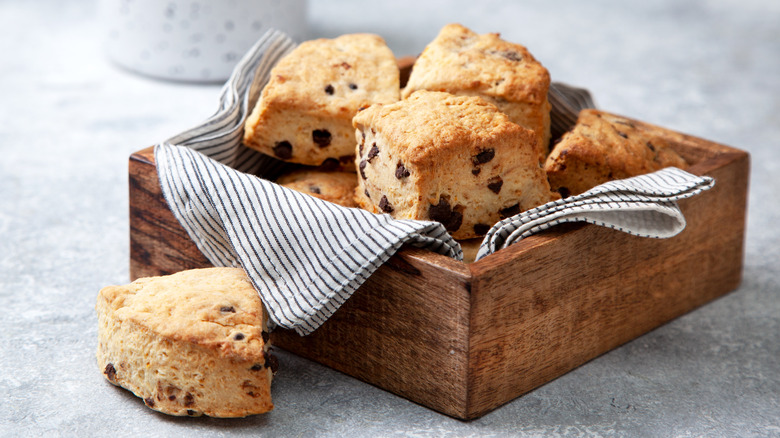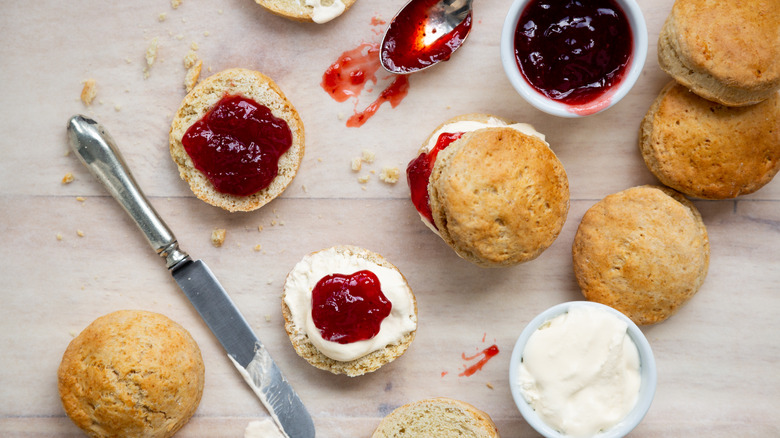One Simple Step That Will Help You Avoid Tough Scones
Whether you're a fan of high tea or simply enjoy sweet treats, scones are never a bad idea. The buttery British staple works perfectly as either a morning or afternoon treat, and comes in enough flavors to appeal to even the pickiest of eaters. Try blueberry scones for a classic, sweet breakfast, or opt for buttermilk blackberry scones if you prefer your fruit with frosting. No matter which variety you choose, scones are certain to meet any and all expectations.
But before you can break out the clotted cream, you first have to finagle the proper technique. We already know that scones turn out significantly better if you use cold butter, though there are plenty of other tricks and tips for home bakers to remember. Kitchn reminds bakers not to over-mix scone dough, and to chill the dough prior to baking them. These steps will help you achieve an ideal scone texture, which are famously finicky. Scones can easily turn out too tough or moist, depending on how much liquid you add. If you don't add enough milk, for example, your scones will be dry and crumbly. Too much liquid, however, and they're a nightmare to form (per Food Crumbles).
Luckily, there's one easy way to keep your scones soft and flaky. The Spruce Eats offers a laundry list of scone-making rules, and one particular suggestion is certain to change your scone game. All you have to do if change how you're adding milk.
Gradually incorporate the milk
To make scones with that perfect, flaky texture, The Spruce Eats recommends deviating from the recipe. Rather than follow a recipe's buttermilk measurements exactly, start by adding only half of the amount required, and gradually incorporate the liquid into your scone mixture, only adding the rest if needed. You want to use just enough buttermilk to bring the dough together — but not so much that the scones come out tough.
King Arthur Baking seconds this method of adding liquid as needed, though they reach for milk or half-and-half instead of buttermilk. Rather than giving bakers an exact milk quantity, the outlet's recipe details a range for the liquid, calling for between ½ to ⅔ of a cup of milk for 2¾ cups of flour. Because flour doesn't absorb liquid consistently, depending on the level of humidity, flour may actually require more or less liquid. For this reason, it's best to start with the minimum amount of milk and simply add as you go.
Clearly, a bit of experimentation goes a long way. What better excuse to bake all of the scones? Here's looking at you, chocolate chip, pumpkin, lemon, and strawberry.

